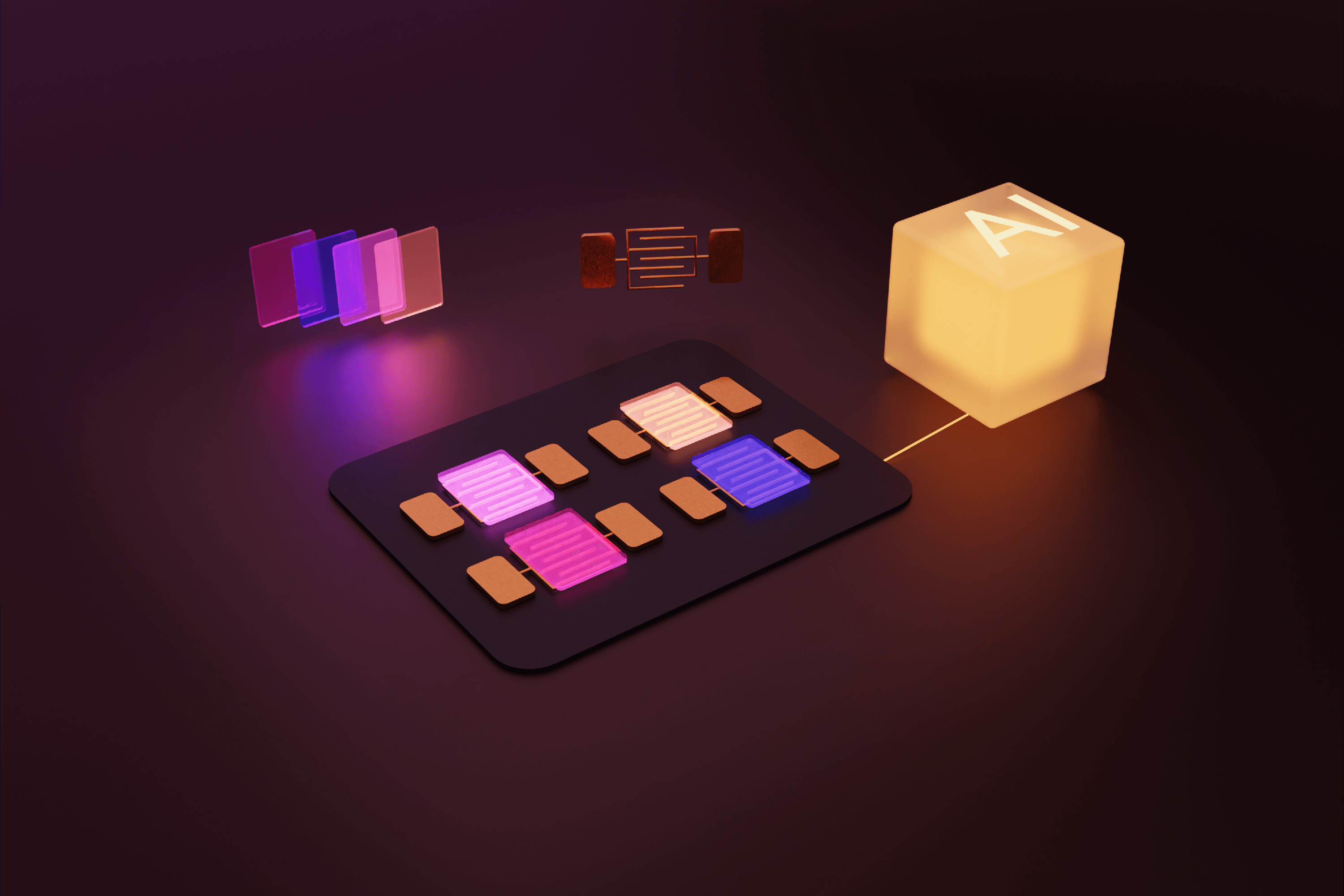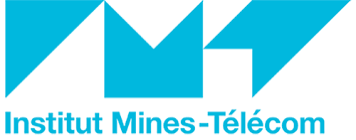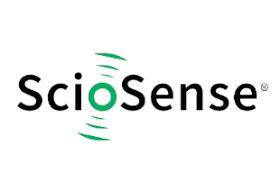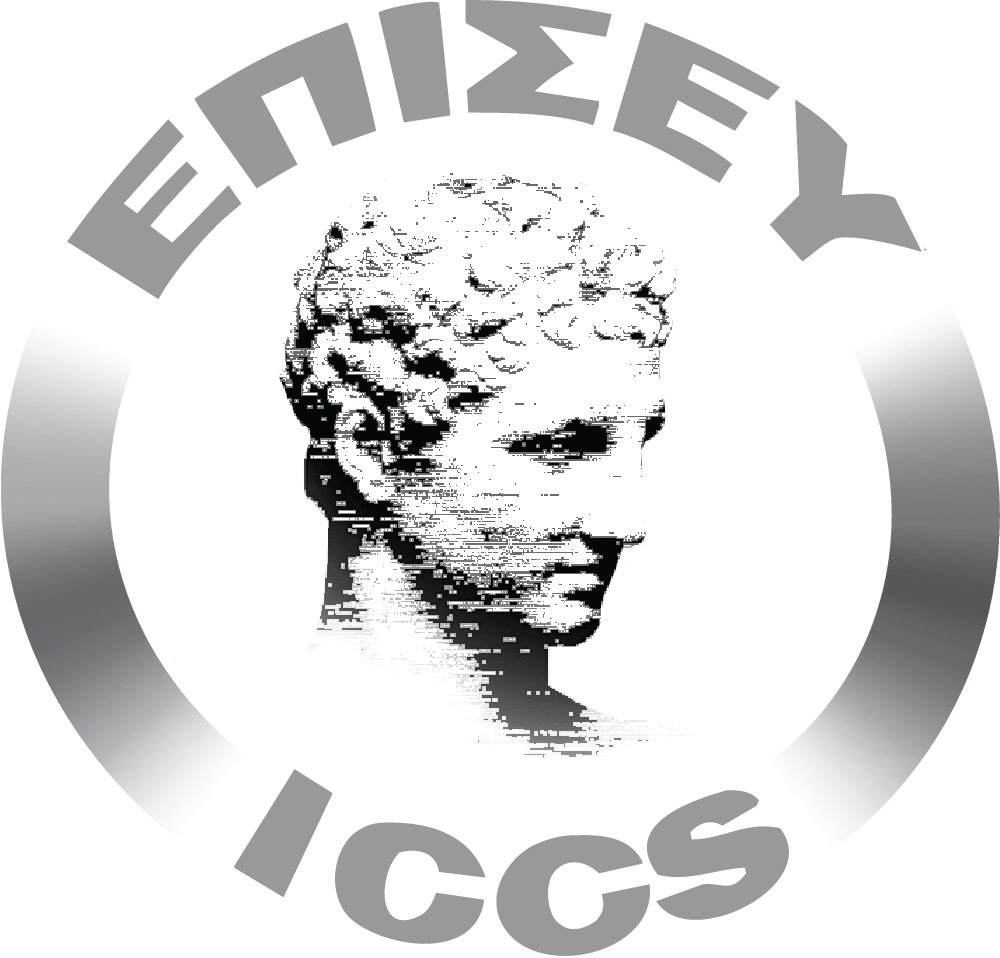
About
Gas sensors are crucial in the personal and industrial monitoring to analyze personal exposure to air pollutants or to critical gases, to control product quality such as in the food industry, and in health care by analyzing gases from human body. These applications require miniaturized low power and low-cost gas sensors with good gas selectivity to be integrated in personal devices, in product packaging or in widely distributed sensor networks.
AMUSENS aims at developing a gas sensor platform with flexible selectivity to different gas environments by combining a multi-pixel approach and artificial intelligence to adapt the data analysis to the targeted applications. It is based on metal oxide sensing materials on micro-hotplate platform, which are already available on the market for low power applications, but suffer from a lack of selectivity. Gas-selective multi-pixel sensors based on different metal oxide materials have been demonstrated, but their industrialization is limited to few industrially available materials. By using original additive manufacturing approaches for local liquid-phase and gas-phase depositions, we aim at extending the choice of available materials and demonstrate their sustainability in wafer-scale processing. Artificial intelligence will be used both to accelerate the choice of materials and for data fusion to determine specific patterns in the gas analysis. Three specific applications chosen in the fields of personal environmental monitoring and health care (metabolic states), as well as stress levels estimation, will demonstrate the adaptability of the platform, based on an analysis of the users‘ requirements.
Vision
AMUSENS is focused on the development of a new adaptable gas sensor platform as well as a new manufacturing method of such platform by combining on-demand gas sensor material selection and additive manufacturing for the on-demand fabrication of dedicated sensors (small scale foundry). Within the gas sensor market, the consumer and appliances markets show the highest growth potential in the coming years, currently limited by the lack of high-performance devices. Microelectronic leaders in Europe are already well established in the gas sensor market and will directly benefit from AMUSENS’s new standards in low-cost and low-power gas sensor fabrication in the view to comfort European leadership in this exploding markets.
Keyfacts
Reference
Reference Number:
101130159
Programme type:
Horizon Europe
Programme acronym:
HORIZON-CL4-2023-RESILIENCE-01-TWO-STAGE
Duration
Project Start:
01.06.2024
48 Months
Cost and Funding
Costs: € 8.596.952,84
Funding:
100,00% EU-funded

Motivation
The concept of multi-pixel gas sensor and AI-assisted sensor data analysis have been widely studied in the laboratory , but their commercialisation suffers from several challenges. Commercial products based on the multi-pixel approach do not show selectivity improvement as compared to single sensors, while multi-sensors integrating AI are restricted to odour recognition. Moreover, the current fabrication methods limit the concept of multi-pixel sensor to very specific combinations of materials with very low degree of adaptability.
Mission and Objectives
The main objective of AMUSENS is to develop a low-power gas sensor platform with adaptable selectivity to different gas environments by combining metal oxide (MO) multipixel sensing approach and trained artificial intelligence (AI), and to demonstrate the adaptability to three user case applications. This approach will circumvent most of the current limitations indicated above.
- (i) Using innovative and sustainable additive manufacturing approaches, AMUSENS aims at demonstrating efficient large-scale production of multi-pixel gas sensors based on a wide variety of MO nanostructures as sensing materials, while drastically reducing material consumptionand waste thanks to localized deposition.
- (ii) AMUSENS will take the advantage of AI first as a screening method for sensing materials to be used in the muti- pixel sensing platforms upon envisaged gas compositions given by the targeted applications (environmental monitoring, health care and stress levels estimation). By combining this selection with the local deposition techniques, AMUSENS will demonstrate a methodology to provide a viable way to produce multi-pixel sensors with on-demand material combinations, thus accelerating the time to market of gas sensors with specific properties.
- (iii) AI will also be used to process signals from the various gas sensing pixels and extract specific patterns characterizing training environments defined by the targeted applications.
- (iv) At last, advanced data treatment and training will compensate variations between different batches and evolutions of the sensing material within the sensor lifetime.
Work Packages
WP1

Project, Risk, Innovation and Sustainability Management (1)
01.06.2024
30.11.2025
Detailed information
WP1 is responsible for the operational management and technical vitality of the AMUSENS project encompassing management tasks on contractual, financial, legal, technical, administrative and ethical levels. The main objective is the establishment of a sound and flexible project management structure and an effective risk management strategy to avoid and properly react to deviations from the work plan. In addition, it includes a Safe and Sustainable by Design (SSbD) assessment of the new adaptable multi-pixel gas sensor and the materials used including Environmental Sustainability (LCA) and Chemical Safety assessment. Another focus of WP1 is to respond to opportunities through active research and innovation management.
WP2

Project, Risk, Innovation and Sustainability Management (2)
01.12.2025
31.05.2027
Detailed information
Continuation of work as in WP1.
WP3

Project, Risk, Innovation and Sustainability Management (3)
01.06.2027
31.05.2028
Detailed information
Continuation of work as in WP2.
WP4

Preparation phase
01.06.2024
28.02.2025
Detailed information
The aim of WP4 is to define clear and reasonable boundaries for the tasks to be carried out to qualify the materials developed for the final device, in a realistic timetable. To demonstrate the universal nature of the multi-pixel object that will be developed in AMUSENS, it will be necessary to define a list of pollutants and significant situations, in sufficient numbers, to test their performance, feed the databases and thus ensure that the best possible combination of materials is obtained, whatever the intended commercial application.
WP5

Phase 1: single sensor development - processing
01.06.2024
30.11.2025
Detailed information
WP5 is dedicated to the development of local deposition of sensing materials using the inkjet printing technique of metal oxide (MO) nanostructures, including the synthesis of non-commercial MO nanostructures and the formulation of inks adapted to inkjet printing, and the direct atomic layer processing (DALP) technique for thin MO and metal films. Four materials will be targeted for each technique, as determined from WP4, and their structural and chemical properties will be investigated. In parallel, WP5 will produce a set of individual sensor devices (“single pixel”) using well-established conventional global techniques that will be packaged to be tested in WP6.
WP6

Phase 1: single sensor development - testing
01.09.2024
30.06.2025
Detailed information
WP6 involves all activities related the functional characterization and testing of single sensors developed in WP5, including the gas testing on single materials to collect performance data. A database of the sensing responses will be created to be used along with the AI algorithm to select the most promising material combination for the specific application and will be made open access at the end of the project.
WP7

Phase 2: multi-pixel sensor development - processing
01.12.2024
31.05.2027
Detailed information
The fabrication of the multi-pixel chip will involve two sequential steps, the inkjet printing of different MO colloidal inks and their thermal post-treatment to form a conducting network, and the functionalisation of some of the MO nanostructure sensors using DALP. The sensing materials will be selected from the results of WP6, and the deposition and post-processing conditions will be adapted from the material development performed in WP5 to the multi-pixel microheater platform, potentially benefitting from the micro-heaters to integrate in-situ localized post-processing. Heating conditions of the multi-pixel micro-hotplate platform will be further analysed and its integration into a final packaging will be investigated. The devices produced in WP7 will be tested for their gas sensing properties in WP8 and the optimized sensors will be provided to WP10.
This WP will participate to the second step of objective O2 by validating the spatial resolution (< 100 μm) of the local deposition techniques and will assess the targeted TRL 5 for both deposition technologies. It will participate to objective O4 by providing the sensing elements of the multi-pixel sensor platform.
WP8

Phase 2: multi-pixel sensor development - testing
07.12.2025
31.05.2027
Detailed information
The multi-pixel sensors developed in WP7 will be tested and characterized to provide input to algorithm development and optimization of the sensors for WP10. The test data AI tools will be developed for automated selection of sensors and operation modes as well as algorithms for integration into sensing devices. Sensor modules will be developed that integrate the multi-pixel sensors with additional sensors (e.g. temperature, humidity, pressure, flow) and processing units to provide test platforms and modules for integration into application specific devices. Throughout this development process, people's needs will be matched with what is technologically feasible.
WP9

Preparation to up-scaling of local deposition techniques
01.06.2026
31.05.2028
Detailed information
WP9 focuses on upscaling of inkjet printing and direct atomic layer processing (DALP) technologies developed in WP5 and WP7. The primary objective is to assess the feasibility of scaling up and propose solutions to accommodate large volume manufacturing. This involves validating the reliability of the developed synthesis and deposition processes, particularly for single sensing elements, across various parameter variations and at different sample sizes. It will include a preliminary work evaluating the deposition process reliability at coupon size and elaborate a methodology to assess the large-scale deposition.
WP10

Test of the platform on user case applications
01.12.2026
31.05.2028
Detailed information
The objective is to test the performance of the multi pixel platform developed in WP7 and WP8 on both selected applications. For individual exposure, it includes evaluating the capacity of the AI tool to identify fingerprint of sources of pollution in a specific context of use. The test will concern individual exposure in different environmental conditions and in different usages conditions by various individuals, evaluating the platform with real users, to improve and perfect it.
WP11

Dissemination, Exploitation and Standardization (1)
01.06.2024
30.11.2025
Detailed information
This WP is dedicated to the project´s communication, dissemination and exploitation to maximise its impact and outcomes. The main objectives of this WP are the targeted dissemination of the project and its results, the internal and external communication of the project, the contribution to the European Research Union, as well as the exploitation of the scientific results to create a competitive advantage with the innovative form. Intellectual Property Rights (IPR) are handled within this WP as well.
WP12

Dissemination, Exploitation and Standardization (2)
01.12.2025
31.05.2027
Detailed information
Continuation of work as in WP11.
WP13

Dissemination, Exploitation and Standardization (3)
01.06.2027
31.05.2028
Detailed information
Continuation of work as in WP12
WP14

Ethics requirements
01.06.2024
31.05.2028
Detailed information
The objective is to ensure compliance with the 'ethics requirements' set out in this work package.
WP15

Model post-development analysis for improved understanding and knowledge share (1)
01.05.2025
31.05.2027
Detailed information
The objectives of WP15 are to improve the transparency and reliability of AI models for sensor material selection and calibration transfer using model-agnostic interpretability techniques. Additionally, it aims to create training materials and organise workshops to disseminate knowledge and promote inclusivity in gas sensor technology, especially targeting Research and Innovation (R&I) widening countries.
WP16

Model post-development analysis for improved understanding and knowledge share (2)
01.06.2027
31.05.2028
Detailed information
The objectives of WP16 are the same as those of WP15 focusing on use-case applications.